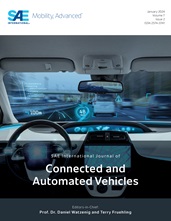Adaptive vehicle control systems are crucial for enhancing safety, performance,
and efficiency in modern transportation, particularly as vehicles become
increasingly automated and responsive to dynamic environments. This review
explores the advancements in bio-inspired actuators and their potential
applications in adaptive vehicle control systems. Bio-inspired actuators, which
mimic natural mechanisms such as muscle movement and plant tropism, offer unique
advantages such as flexibility, adaptability, and energy efficiency. The article
categorizes these actuators based on their mechanisms, including shape memory
alloys, dielectric elastomers, ionic polymer–metal composites, and soft
pneumatic actuators. The review highlights the properties, operating principles,
technical maturity, and potential applications for each mechanism in automotive
systems. Additionally, it investigates current uses of these actuators in
adaptive suspension, active steering, braking systems, and human–machine
interfaces for autonomous vehicles. The review further outlines the advantages
of bio-inspired actuators, including their energy efficiency and adaptability to
road conditions, while addressing key challenges such as material limitations,
response times, and integration with existing automotive control systems.
Finally, the article discusses future directions, including the integration of
bio-inspired actuators with machine learning and advancements in material
science, to enable more efficient and responsive adaptive vehicle control
systems. This review concludes that bio-inspired actuators will play a
significant role in the future of the automotive industry, offering several
advantages related to weight, power, flexibility, and cost when compared to
conventional systems.
